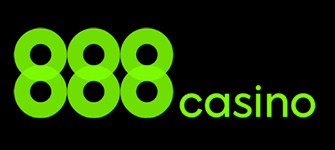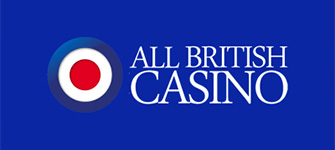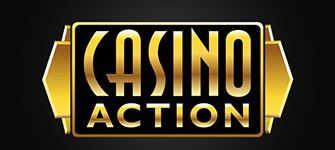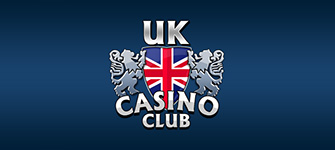How to Hit a Hand
Hitting a hand in Blackjack can sometimes be a risky venture. The fastest way to lose the game is by going over 21 and we all know how easy this is. Whether a player should hit or stand depends on two major factors – the player’s total and the dealer’s upcard.
Sadly, no uniform hitting strategy works optimally across all variations and sets of rules. The exact hitting decisions are based on a variety of factors including the deck number, the standing rules for the dealer, the style of card dealing, and more. With that in mind, we shall lay down some of the hitting moves that largely coincide across most blackjack variations.
All of these are basic strategy moves, and as such, are considered optimal when one plays against a neutral deck or shoe, i.e. one that is reshuffled after each round as is the case in RNG-based online blackjack variations.
- ✓ How to Hit a Hand
- ✓ When You Can Hit a Hand
- ✓ When to Hit a Hard Hand
- ✓ When to Hit Soft Hands
- ✓ When to Hit Paired Cards
- ✓ When Late Surrender is Better
Keep in mind the moves are proven to be mathematically correct since they are based on computer simulations, involving millions of hands. Knowing when to hit or stand correctly leads to a significant reduction of the house edge, ultimately improving your winning odds and minimizing your losses over the long haul.
How to Hit a Hand in Blackjack
Let’s start with the basics. Blackjack players are allowed to hit right after their first two cards have been dealt. When you hit a hand, you request the dealer to draw one or more cards to your starting total. You can hit as many times as you like as long as your hand total does not go over 21. When it does, you automatically lose the hand.
When playing blackjack in a landbased casino, the player must indicate they want to hit with a specific hand gesture, which depends on the way their cards are dealt. In single and double-deck blackjack, both cards of the players are dealt face-down.
The player is allowed to touch them to check their values but should not remove them from the table under any circumstances. Meanwhile, the players’ cards in multiple-deck shoe-dealt blackjack are dealt face-up and you are altogether prohibited from touching them.
Hand gestures are used for the playing decisions for the purpose of eliminating any misconceptions about the player’s desired moves. You show the dealer you want to hit in single and double-deck games by scratching the layout slightly with your first two cards. The extra cards will be dealt in front of your chips.
If they cause your hand total to exceed 21, you must toss your losing hand on the table, with the cards facing up. The dealer will take your chips and remove your cards from the layout. Hitting is different in shoe-dealt games where you show the dealer you want extra cards by lightly tapping the layout with your finger. Just make sure you do not touch the cards when doing so.
When You Can Hit a Hand
A player is allowed to hit right after their hand has been dealt. They can hit as many times as they want as long as their hand total does not go over 21. Different variations of the game hold different rules on hitting after splitting pairs of aces. In most variants of online blackjack, only one additional card is drawn to each split ace and players are not allowed extra hits. A player also cannot hit after they have doubled down on a hand.
Players can hit any hand total provided that it is under 21. If the hand exceeds this total, it automatically loses. Hitting, along with standing, is one of the two most frequent playing moves in blackjack. Hitting and standing are the last playing moves players should consider when deciding how to play a hand.
Unlike surrendering, splitting, and doubling, hitting and standing are possible on any unbusted hand regardless of how many cards it contains. By contrast, the other moves are possible only on two-card totals. Therefore, the correct order of choosing an optimal playing decision is as follows – surrender, pair splitting, doubling down, and hitting/standing. We have not included buying insurance because this is always a negative-expectation bet with basic strategy.
When to Hit a Hard Hand
To reduce the house edge to a tolerable percentage, you will need a special basic strategy card that tells you exactly when to hit against each possible dealer upcard. Such strategy cards are available on every casino floor and there are tons of them online as well. Some online variations of the game even correct you by displaying hints and strategy warnings if you misplay a hand.
Each strategy card corresponds to a particular variation of blackjack although some rules are shared between all tables. For example, you should always hit if you have a total of 8 or less in your hand no matter what value the dealer’s exposed card has.
The optimal hitting decisions may vary between games, depending on the number of decks and whether on or not the dealer hits soft 17. Whether the hand is hard or soft also influences the correct hitting decisions. Hard hands 12 through hard 17 are considered the poorest starting totals from the players’ perspective regardless of what the exposed card of the dealer is.
Such hands stand higher chances of busting on the next hit. In the long term, hard 12 through hard 17 yield negative expected value even with basic strategy. With them, you will lose more often than you will win.
Perhaps worse is the fact that such hard totals occur more frequently than all other hands in the game. Players will receive hard 12 to hard 17 four out of each ten hands they play, which is approximately 40% in the long term. However, the least you can do is reduce your long-term losses by hitting these card totals correctly in line with the optimal strategy.
Basic Strategy for Hitting Hard Hands
Below, we summarize the hitting decisions according to basic strategy that correspond to shoe games that implement between 4 and 8 decks where surrender is not supported. We suggest you use some of the customizable strategy calculators available online. You can enter the exact playing conditions of your chosen variation and the strategy engine will make all the necessary modifications for the optimal moves.
Note that the correct hitting moves are not influenced by the rules on doubling after a split. The moves suggested below can be used regardless of whether or not doubling after splitting is allowed.
- Hard 4 through hard 8 are always hit against any dealer upcard in both S17 and H17 games.
- Hard 9 is always hit against dealer upcards 2, 7, 8, 9, 10, and ace in both S17 and H17 variations.
- Hard 10 should be hit only against a dealer showing an ace or a 10, regardless of the dealer’s standing rules.
- Hard 11 is hit only against the dealer’s ace in S17 games and is doubled down on in H17 games.
- Hard 12 requires a hit against all dealer upcards bar 4, 5, and 6 regardless of the standing rules for the dealer.
- Hard 14 through hard 16 (included) is hit when the dealer’s exposed card is 7, 8, 9, 10, or ace.
- You should not hit if you have a total of hard 17 or more in your hand. This applies against all exposed cards of the dealer in games that lack the surrender option.
When to Hit Soft Hands
The correct decisions for hitting certain soft totals do not coincide with those for the same hard totals. The trouble with some rookie players is that they make no distinction between the two, which causes them to frequently misplay soft hands, one prime example being soft 17.
For clarification, soft hands are those that contain an ace, which can be counted either as 1 or 11. It is up to the player to decide what value to assign to the ace. Thus, a soft 17 (A/6) can be treated as a total of 7 upon the player’s request. It follows some soft hands require a different strategic approach because the player cannot exceed 21 and lose automatically with a single-card draw.
Some soft totals are worth hitting against specific dealer upcards. This is usually done when you attempt to improve your hand against a strong dealer and reach the 18+ safe zone. It is important to remember that the average winning hand in blackjack, both for the house and the player, has a total of 18.5.
Another peculiarity of soft hands is that when hit, they sometimes turn into hard totals. For instance, assume you are dealt A/3, or soft 14, against a dealer whose face-up card is an 8. The correct move, in this case, is to draw another card to your soft 14.
You draw again and the dealer pulls out a Jack, which is assigned a value of 10. Thus, your soft 14 now becomes a hard 14 and you hit again in line with the basic strategy plays for this hard total. You continue hitting until you are either bust or your total gets to 17 or above.
Basic Strategy for Hitting Soft Hands
Similarly to hard hands, the correct hitting decisions for soft totals are influenced mainly by whether the dealer hits (H17) or stands on soft 17 (S17) as well as by the number of packs the game is dealt out of. The availability of doubling after a split is again irrelevant in this case. You can make this move even if you cannot double after you split pairs. The moves we outline below are optimal for multiple-deck blackjack variations.
- Soft 13 (A/2) and soft 14 (A/3) both call for hitting against all dealer upcards bar 5s and 6s, in which case you double. Hitting these soft totals is valid in both H17 and S17 variations.
- Soft 15 (A/4) and soft 16 (A/5) are hit in both H17 and S17 games unless the dealer shows 4, 5, or 6. If so, you should double down rather than hitting.
- Soft 17 (A/6) is hit against dealers who show 2, 7, 8, 9, 10, or ace. You double down against a 3, 4, 5, or 6 rather than hitting.
- Soft 18 (A/7) is one of the most commonly misplayed hands by novice blackjack players. You should draw to this hand when the dealer’s upcard is one of the following: 9, 10, or ace.
- Soft 19 (A/8) and above require you to stand no matter the value of the dealer’s exposed card.
- Soft 12 consists of paired aces (A/A) and is treated separately as you shall see shortly.
When to Hit Paired Cards
Paired two-card totals should be approached differently when one follows the correct order of playing decisions in blackjack (surrender, split, double down, hit, stand). As you can see, when you are dealt paired cards, you must first evaluate whether they are worth splitting in line with basic strategy, depending on the face-up card of the dealer. If not, you consider doubling and proceed to hit only if the dealer’s upcard is very strong and does not justify increasing your stake.
Basic Strategy for Hitting Pairs
The correct strategy decisions for hitting or splitting pairs are again determined based on the deck number and the fixed standing rules for the house’s representative, the dealer. The moves recommended below are optimal for shoe games, dealt out of four or more decks. We decided to list them since most of the blackjack games available for online play utilize multiple decks rather than one or two packs of cards.
- You should never hit if you have a pair of aces or 8s. If surrender is not available, these two pairs should be always split no matter the value of the dealer’s card and the standing rules they follow.
- Pairs of 2/2 and 3/3 are hit rather than split if the dealer exposes 8, 9, 10, or aces. The player should also hit these pairs if resplitting is unavailable and the dealer’s upcard is a 2 or a 3.
- Pairs of 4/4 require a hit against all dealer upcards bar 5 or 6, in which case it is more optimal to split.
- A pair of 6/6 is hit against a dealer whose exposed card is 7, 8, 9, 10, or ace. If you split and catch another 6 on one of your two hands but resplitting is prohibited, you should also hit this pair against the dealer’s deuce.
- A pair of 7/7 requires you to draw again if the dealer shows 8, 9, 10, and ace.
- A pair of 9/9 should never be hit regardless of what the dealer has. The 9s are always split unless the dealer shows 7, 10, or ace, in which case you stand.
When Late Surrender is Better than Hitting
On the occasion of being dealt certain hard totals, players are better off surrendering right away than proceeding to hit in hopes of improving their winning chances. This is especially valid for specific hard totals like hard 15 and hard 16 when the dealer is in a particularly good spot, showing strong upcards like tens and aces.
The player chooses the surrender option at the beginning of the round before they have made any of the other possible playing moves. The dealer would immediately remove the two surrendered cards from the layout, return half of the player’s initial wager, and collect the rest in favor of the house.
This option is not always available but the few blackjack variants that support it typically offer late rather than early surrender. This is where you are offered to forfeit half your wager once the dealer has checked for a blackjack. Note that surrendering is no longer possible if it turns out the dealer indeed has a natural 21.
Although it might seem surprising given the move’s name, in some cases, late surrender yields more value than other decisions, like hitting. This move ultimately saves you money as it helps you minimize your losses when in bad situations, reducing the house edge by 0.07% in shoe-dealt blackjack variations.
Basic Strategy for Late Surrender
In certain scenarios, late surrender helps you lose less money than you would otherwise lose when hitting the same bad hands. The correct surrender moves are again dependent on a variety of factors, including the dealer’s exposed card, how many decks are used, and your starting total. Whether or not the dealer hits soft 16 is also taken into account, particularly when their upcard is an ace.
The rule of thumb is that if a starting two-card total stands under 25% of winning against a given dealer upcard, surrender becomes the best out of all playing decisions. It is mathematically established that forfeiting such hands will save you more money over the long haul than trying to improve them by hitting.
One of the most notorious examples when the above statement is true concerns hard totals of 16, such as 10/6 or 7/9 against a dealer holding a ten-value card. Through a series of computer simulations, it was established that this player total will lose against the dealer’s ten approximately 76% of the time when you hit and a little over 77% of the time when you stand.
Meanwhile, you will lose only half of your wager, or 50%, when you surrender this hand rather than hitting or standing. Below, we have listed all the situations when surrender becomes the optimal move in blackjack.
Surrender Moves in Multi-Deck Blackjack
- Surrender hard 15 against the dealer’s 10 in S17 blackjack. In H17 games, this hard total should be surrendered when the dealer exposes a ten-value card or an ace.
- Surrender is the optimal move with a hard 16 against a dealer with a 9, 10, or ace in both S17 and H17 variations.
- In H17 games, you should also surrender a hard 17 when the dealer’s exposed card is an ace.
- In H17 blackjack, the player is better off surrendering a pair of 8/8 against the dealer’s ace instead of splitting.
Surrender Moves in Single-Deck and Double-Deck Blackjack
- Surrender hard 16 against the dealer’s ten-value cards and aces only in S17 games. In H17 single-deck variants, you should also surrender hard 15 and hard 17 against the dealer’s ace.
- Surrender pairs of 7/7 in S17 games when the dealer shows a 10 only. In H17 single-deck blackjack, this pair should also be surrendered when the dealer’s exposed card is an ace.
- In double-deck S17 blackjack, you should surrender hard 15 against the dealer’s ten-value cards and hard 16 if the dealer has a 10 or an ace.
- Hard 17 should be forfeited if the dealer in double-deck H17 games has an ace as their upcard.
- Pairs of 8/8 are surrendered in double-deck H17 games when the dealer has an ace only.


 PlayOJO Casino
PlayOJO Casino 888casino
888casino All British Casino
All British Casino Casino Action
Casino Action UK Casino Club
UK Casino Club